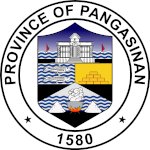Pangasinan Day in the Philippines Date in the current year: April 5, 2026
 Pangasinan Day (Araw ng Pangasinan) is a special non-working holiday celebrated in the Philippine province of Pangasinan on April 5 every year. It was established to commemorate the province’s founding anniversary.
Pangasinan Day (Araw ng Pangasinan) is a special non-working holiday celebrated in the Philippine province of Pangasinan on April 5 every year. It was established to commemorate the province’s founding anniversary.Pangasinan is a Philippine province situated in the Ilocos Region of the island of Luazon. Its native inhabitants are the Sambal people and the Pangasinan people; the Illocano people have settled in the area centuries ago due to ethnic migration. The name of the province can be translated as “place of salt” or “place of salt-making”.
Pangasinan was settled by Austronesians during the Austronesian expansion around 3000 to 1500 BCE. There is evidence of the area being part of the Austronesian maritime trade network since at least 8th century AD. Natives traded salt and other local products such as deerskin with China, Japan, and India.
Some believe that the first European to set foot in Pangasinan was Odoric of Porderone, a Franciscan friar and missionary from Italy, in 1324. However, there is not enough evidence to prove that he indeed visited the Philippines, so the general consensus is that Ferdinand Magellan was the first European to set foot on Philippine soil.
The Spanish conquest of Pangasinan began in 1571, when a Spanish expedition led by Martín de Goiti came to the region from Manila. About a year later, another Spanish expedition led by Juan de Salcedo landed at the Lingayen Gulf.
The Spanish officially designated Pangasinan as an administrative and judicial district with Lingayen as its capital on April 5, 1580. This day is regarded as the founding anniversary of the province of Pangasinan. The territorial boundaries of Pangasinan were officially delineated in 1611; in addition to present-day Pangasinan, they included most of what is now Zambales and portions of what are now the provinces of Tarlac and La Union.
Following the defeat of the Philippines in the Philippine-American War, several municipalities from the neighboring provinces of Nueva Ecija and Zambales were annexed to Pangasinan by the American administration. During World War II, Pangasinan was occupied by Japan, and its capital was temporarily relocated to Dagupan.
Today, Pangasinan is one of the top ten Philippine provinces by population; it has a population of over 3.1 million people, about 2 million of whom are indigenous Pangasinan speakers, and the rest belong to other ethnolinguistic groups. The province is known for its tourist attractions, such as white-sand beaches and the Hundred Islands National Park, and local products such as salt, bagoong (fermented krill paste), alamang (salted krill), mangoes, and puto (rice cake).
The first celebration of Pangasinan’s founding anniversary took place on April 5, 2010. In August 2019, President Rodrigo Duterte officially declared April 5 a special non-working holiday in Pangasinan. The celebration usually focuses on the province’s culture, arts, and music; its program includes concerts, cultural and food festivals, a pageant, and other festive events and activities.
- Category
- Anniversaries and Memorial Days
- Country
- Philippines
- Tags
- Pangasinan Day in the Philippines, holidays in the Philippines, special non-working holidays, regional observances, founding anniversary